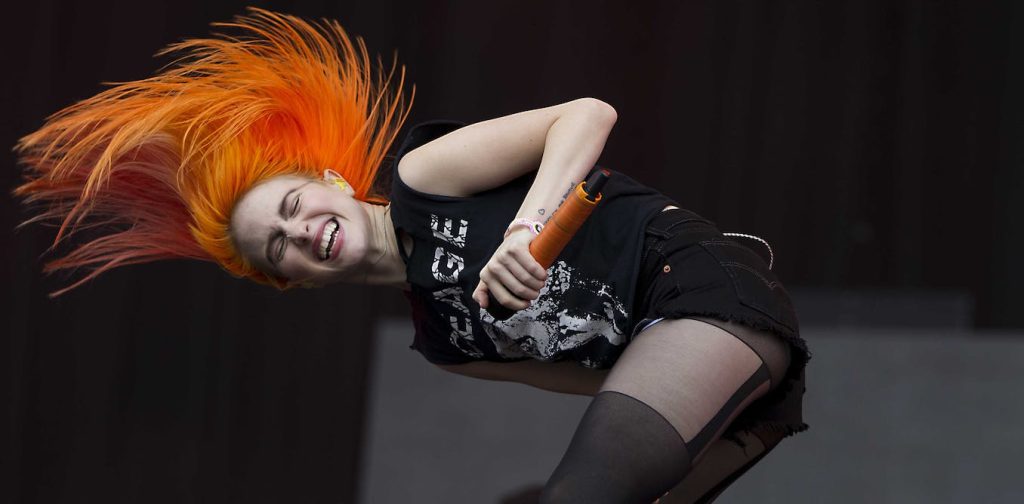My Chemical Romance – mainstay alternative band of the Noughties – made a triumphant return in 2022 with new music and a reunion world tour.
There was also the blockbuster Hella Mega Tour with Fall Out Boy, Weezer and Green Day filling stadiums across the US and UK. And promises of more emo reunions to come abound for 2023, most recently with the announcement of an extensive Paramore comeback tour (front woman Hayley Williams also hosted the podcast Everything Is Emo for BBC Sounds earlier this year).
Little wonder, then, that several music outlets decided to hail 2022 an “emo revival”.
Cue a chorus of internet commenters rushing to explain that My Chemical Romance are not emo, that emo is dead, that emo only ever lived in a handful of Washington DC basements in the late 1980s, and that anything in music that has happened since is merely corporate degeneracy consumed by 13-year-old girls who have never even heard of The Promise Ring.
As an expert in media and cultural studies, I have explored this tension in my book Emo: How Fans Defined a Subculture, which argues that musical genres are culturally created constructs, forever in struggle and flux. This has been obscured by musicology’s (the study of music) relatively late engagement with cultural studies perspectives, as opposed to say English literature or the visual arts.
When musicologist Susan McClary published Feminine Endings in 1991, the idea that music was constructive, not reflective, of gender was still groundbreaking work in the field of music, even though cultural theorists like Simon Frith and Angela McRobbie had been writing on the topic since the 70s. The artificial boundaries between academic disciplines enabled this.
So, this article comes with a disclaimer. In speaking of an emo “revival” here, I am by no means claiming a set definition of “real emo”, because it doesn’t have one. Nor does “music”, incidentally.
What do I mean by “emo”?
By “emo”, I am referring to a specific style of melodic instrumentation over a relatively hard, driving beat, which first gathered mainstream popularity in the early 2000s.
Jezebel Parker, CC BY-SA
The movement that came, somewhat retrospectively, to also be called emo, was varied both in style and composition, but did feature certain sonic and visual hallmarks. This included highly wrought confessional lyrics, long polysyllabic song titles, and the conjunction of hard, even thrash-derived sounds like a screamed chorus with much softer instrumental passages.
Emo tended to be more complex than the reliance on I, IV V power chords common to punk. Researchers Sam de Boise and Sarah Williams have also called attention to a distinct “emo voice” – a slightly nasal tenor with a diaphragmatic push.
Visually, the style favoured straightened black hair, skinny jeans, band t-shirts and Converse trainers. It owed something to goth and something to punk and skater culture, with luminous pops of colour adding more than a hint of self-conscious kitsch.
What has brought about the “emo revival”?
If there is an emo revival, I think that two of the same key factors which were at work to popularise it in the early 2000s are once again the cause: technology and nostalgia.
Partly, that is the nostalgia of thirty-somethings like myself. In the face of an increasingly perilous economic and ecological adulthood, we’re repopulating our Spotify playlists with the music of our early teens. One of the new emo festivals is literally called When We Were Young. A bit on the nose there.
Equally, the revival is benefiting from the nostalgia of generation Z (people born after 1996) for a youth they didn’t experience. This is happening in the same way that early 2000s emo harked back nostalgically to a 1980s punk-basement adolescence I and my contemporaries never experienced.
Emo is a nostalgic genre, and hard times bring about nostalgia both real and artificial. Nostalgia is an easy sell in a tough economy.
Jon Rowley
Just as new digital norms for music creation, consumption and distribution were a factor in the early 2000s mainstreaming of emo, the dominance of digital algorithms in how we consume and share music today should be considered.
Gen Z has instant access to the entire back catalogues of emo artists who are returning to prominence. Simultaneously, the fusion phenomenon of emo rap and SoundCloud emo (where emergent artists are taking elements of the genre in new directions), are being displayed to listeners via streaming service recommendation features.
As I write this, I anticipate again the objections that rap is not emo; that emo is dead; that whatever happens on SoundCloud is not emo – that emo requires guitars.
At an instinctive level, I share them. This is not my emo, not the emo I grew up with. But as I came to conclude in writing my book, attempts at gate keeping always lead us to incoherence.
Genres are constantly redefined by their audiences, in a process of negotiation with the music industry. My generation can adjust, and learn to listen to new sounds. Or, thanks to streaming services, we can keep the same six or seven albums from 2001-2009 on repeat for the rest of our crisis bedevilled lives. Spotify is good for that kind of nostalgia – so long as you’re paying for Premium.
Emo is dead; long live emo.

